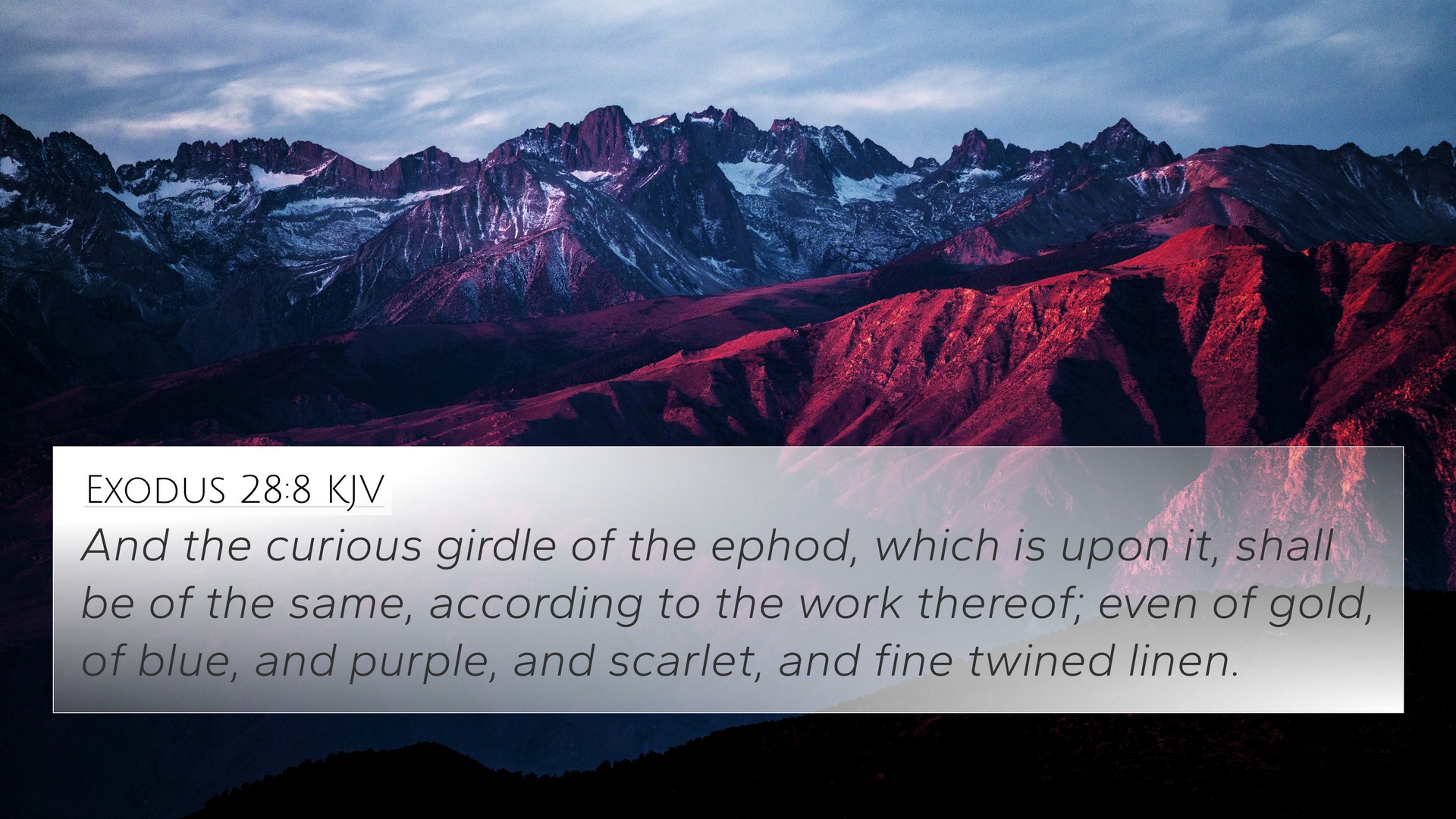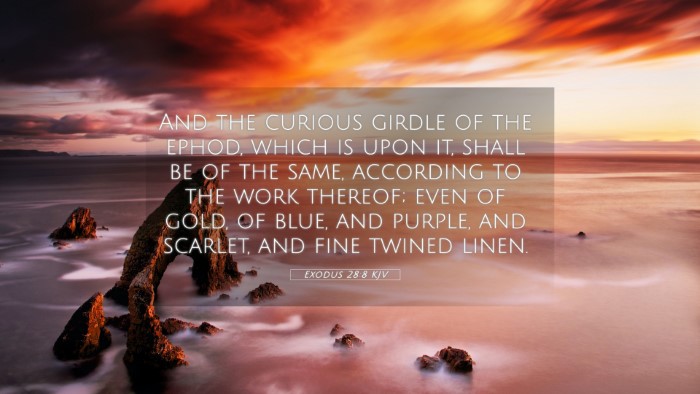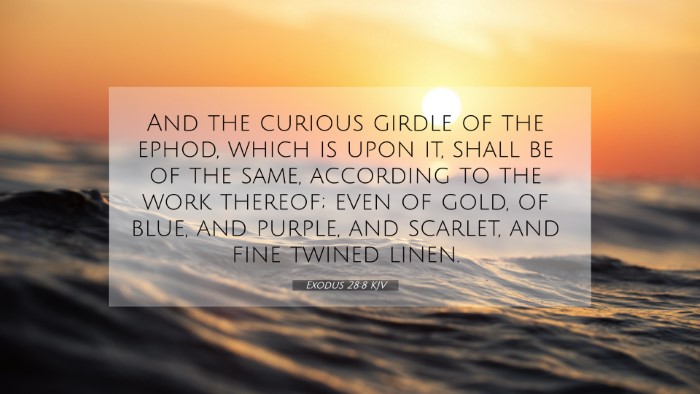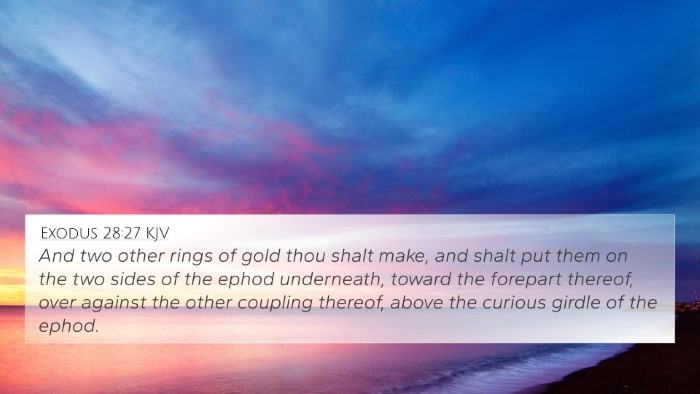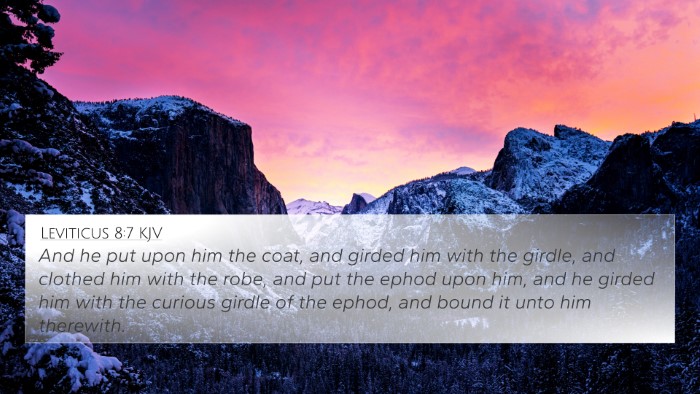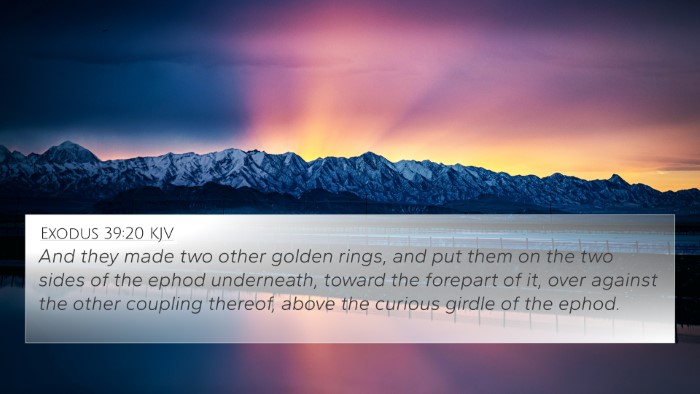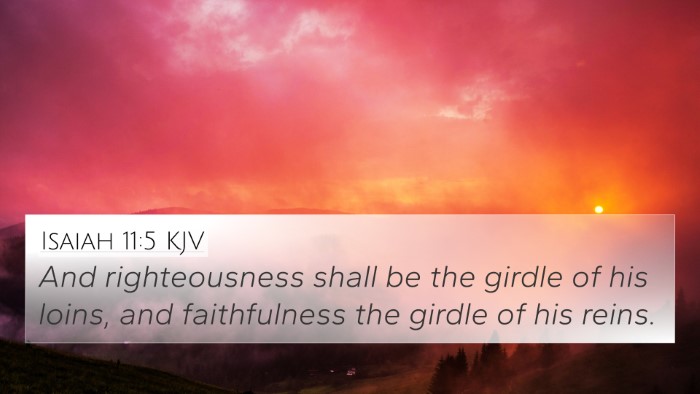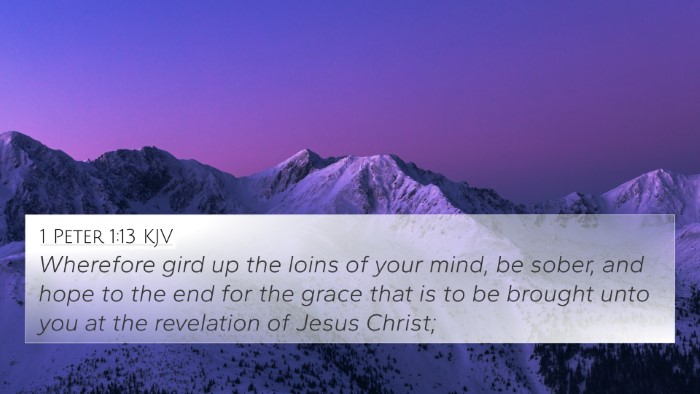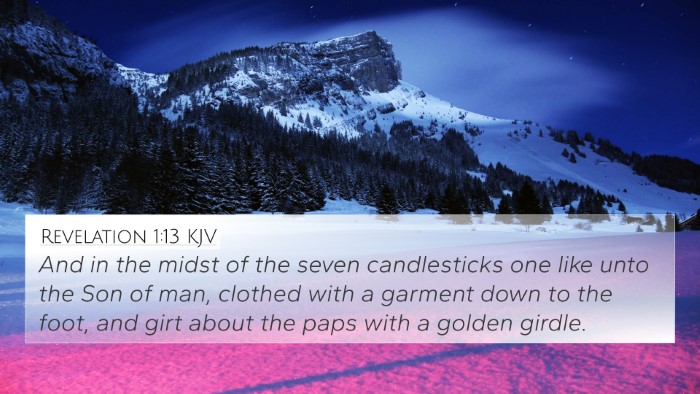Exodus 28:8 - Understanding the Priestly Garments
Exodus 28:8 states, "And the curious girdle of the ephod, which is upon it, shall be of the same, according to the work thereof; even of gold, of blue, and of purple, and of scarlet, and fine twined linen." This verse addresses the intricacies and symbolism behind the garments designed for the priests, specifically the ephod. The ephod was an essential part of the priestly attire that held significant meaning both in functionality and representation.
Significance of the Ephod
The ephod serves not only as a vestment but also as a symbol of the high priest's role in mediating between God and the people. Its details reveal more than just a ceremonial outfit; they imply deeper theological significance and connections to covenants and worship.
Commentary Insights
-
Matthew Henry: Henry noted the ephod’s intricate design and vibrant colors, highlighting that the materials symbolize the beauty and majesty of God’s presence. The ephod serves as a reminder of the priest's duty to bear the names of the tribes of Israel before the Lord.
-
Albert Barnes: Barnes elaborated on the mixture of materials, emphasizing that the gold represented divine glory while the blue, purple, and scarlet represented royalty and the heavenly nature of God’s kingdom. The design signifies the access a priest has to God’s presence and the accountability that comes with that access.
-
Adam Clarke: Clarke pointed out the craftsmanship involved in creating such garments. He focused on how each piece was intended to set the priests apart from the people, underscoring their unique calling and the importance of holiness in their service.
Thematic Connections to Other Scriptures
Exodus 28:8 draws on themes that resonate with various other Bible verses, creating a fabric of connections that highlights the importance of priestly roles throughout the Bible. Here are some related verses:
- Leviticus 8:7-9 - Details the garments of Aaron and their significance in the consecration of priests.
- Hebrews 5:1 - Discusses the role of the high priest and how it functions as a mediator.
- 1 Peter 2:9 - Describes believers as a royal priesthood, evoking the significance of priestly attire.
- Exodus 28:6 - Introduces the ephod and its crafted details, setting the stage for the description of the girdle.
- Revelation 1:6 - Connects priestly service with believers' identity in Christ as part of God's kingdom.
- Isaiah 61:10 - Speaks of robes of righteousness, paralleled with the precious garments of the priest.
- Matthew 22:11-12 - The significance of being properly attired for the wedding feast aligns with spiritual readiness.
- Exodus 39:5 - Describes the construction of the ephod, including detailed aspects linked to Exodus 28.
- Psalm 104:1-2 - The glory of God is likened to garments that speak to divine majesty, paralleling the ephod's significance.
- 1 Timothy 2:9 - Highlights the appropriateness of attire in worship, reflecting the principles established in the Old Testament regarding priestly garments.
Application and Reflection
For contemporary believers, understanding Exodus 28:8 involves more than historical context; it challenges us to consider how we approach God and the importance of our spiritual attire. Just as the priest's garments were adorned with significant colors and materials, our lives must reflect the glory of God and the calling we have received. This verse invites us to examine our spiritual readiness and to understand our identity as priests in a modern context, bridging the decorations of ancient roles with our present-day lives.
Conclusion
Ultimately, Exodus 28:8 serves as a pivotal reminder of the holiness required in approaching God and the significance of priestly garments that symbolize purity and dedication. By understanding this verse through the insights of various commentators and examining its connections with other scriptures, believers are invited to engage deeper with the character of God's covenant and their role within it. The inter-Biblical dialogue illustrates the continuity of God’s desire for relationship with His people, which transcends time.
